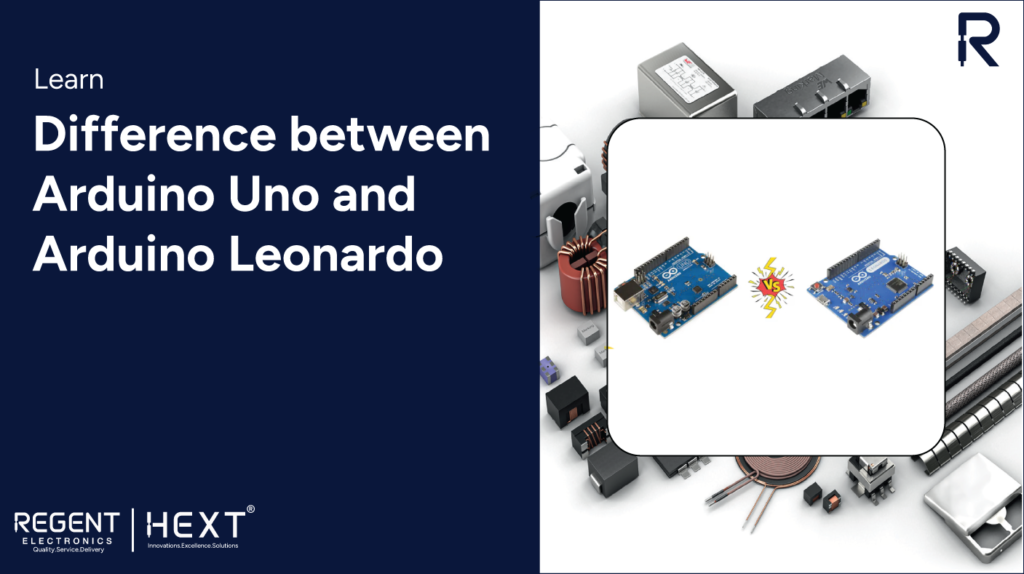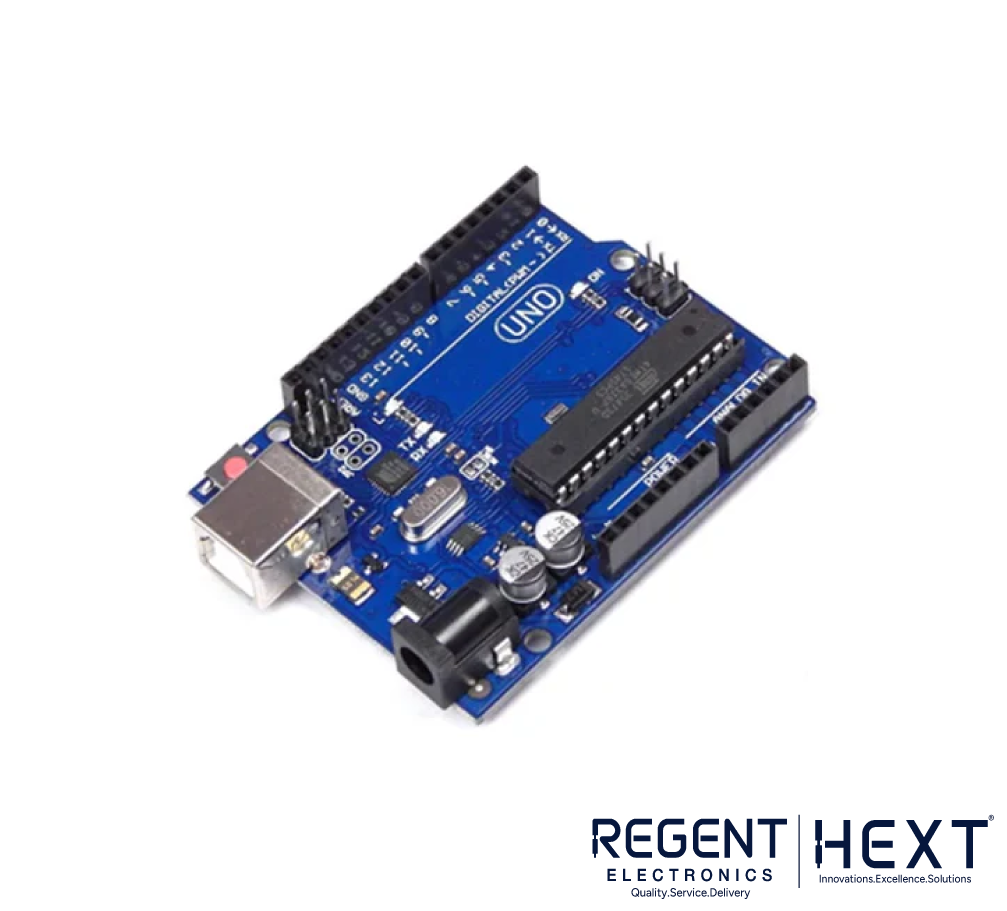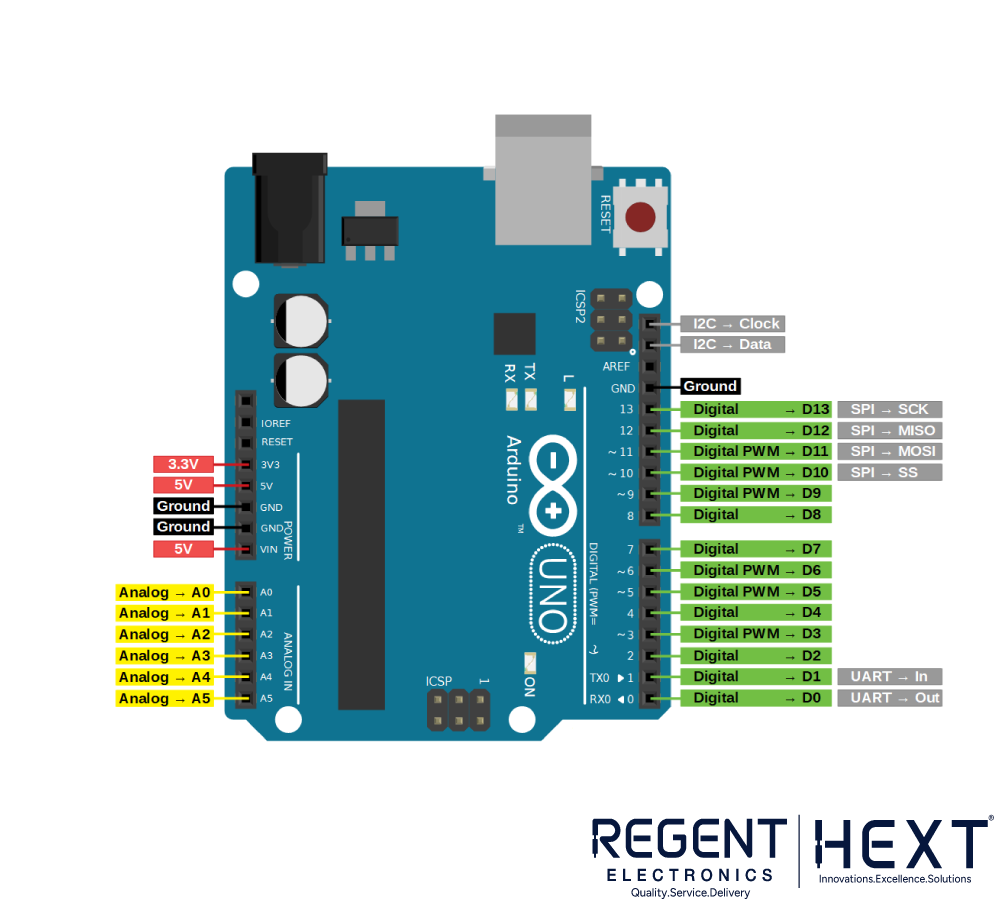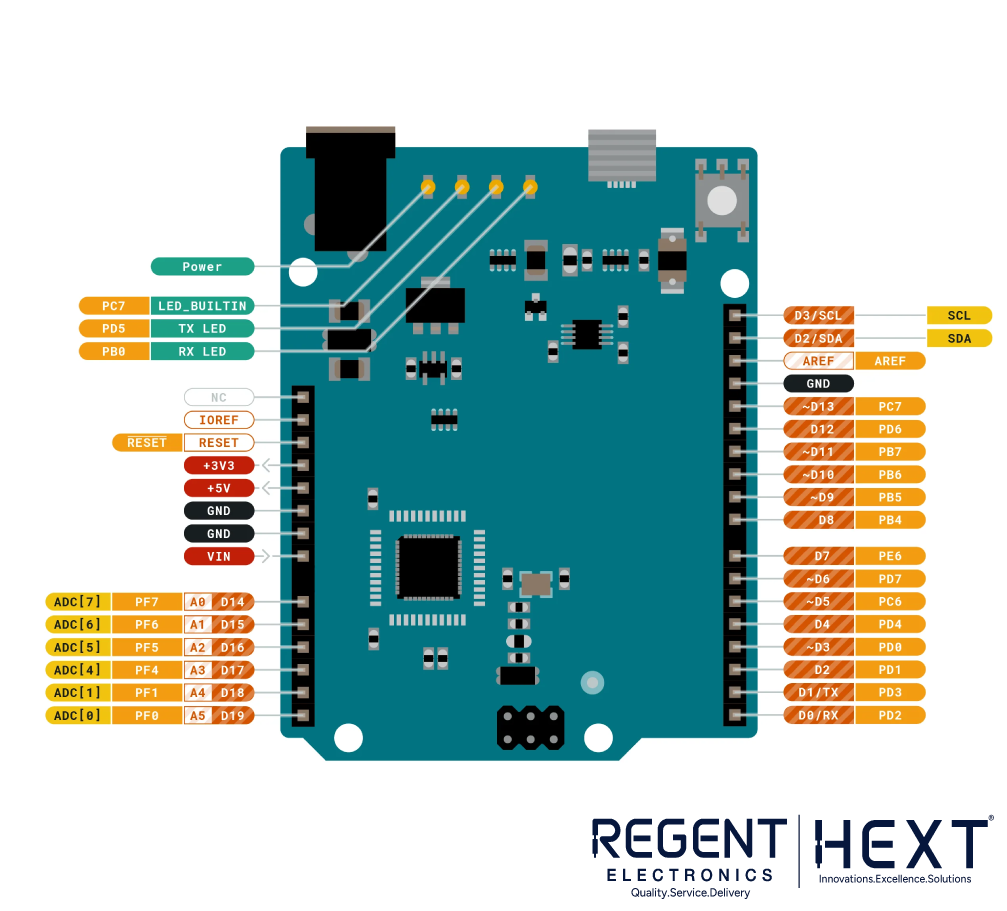
Difference Between Arduino Uno and Arduino Leonardo
In this guide, we’ll explore the key differences between the Arduino Uno and Arduino Leonardo. These popular microcontroller boards have unique features tailored to various applications, making it essential to choose the right one for your project.
Arduino Uno Overview

The Arduino Uno is a microcontroller board powered by the ATmega328P processor. It’s widely used due to its simplicity, versatility, and ease of use, making it a favorite among beginners and professionals alike.
Key Specifications:
- Microcontroller: ATmega328P
- Digital I/O Pins: 14 (6 support PWM)
- Analog Input Pins: 6
- Clock Speed: 16 MHz
- Memory:
- SRAM: 2 KB
- Flash: 32 KB
- EEPROM: 1 KB
- Power:
- Operating Voltage: 5V
- Input Voltage: 7-12V
- USB Connector: USB-B
Arduino Uno Pinout Details:

| Pin Category | Pin Names | Description |
| Power | Vin, 3.3V, 5V, GND | Provides power to the board and peripherals. |
| Reset | Reset | Resets the microcontroller. |
| Analog Pins | A0 – A5 | Accepts analog input signals (0-5V). |
| Digital Pins | 0 – 13 | Functions as input/output pins; some support PWM. |
| Serial | 0 (Rx), 1 (Tx) | Used for serial communication. |
| PWM | 3, 5, 6, 9, 10, 11 | Provides 8-bit PWM output. |
| SPI | 10 (SS), 11 (MOSI), 12 (MISO), 13 (SCK) | Facilitates SPI communication. |
| LED | 13 | Built-in LED for basic testing and debugging. |
| AREF | AREF | Sets the reference voltage for analog inputs. |
The Arduino Uno’s replaceable ATmega328P microcontroller is a standout feature. If the microcontroller fails, you can easily replace it without discarding the entire board.
Arduino Leonardo Overview

The Arduino Leonardo features the ATmega32u4 processor, making it unique due to its built-in USB communication capability. This board is ideal for projects requiring direct USB communication, such as keyboards or mice.

Key Specifications:
- Microcontroller: ATmega32u4
- Digital I/O Pins: 20 (7 support PWM)
- Analog Input Pins: 12
- Clock Speed: 16 MHz
- Memory:
- SRAM: 2.5 KB
- Flash: 32 KB (4 KB used by bootloader)
- EEPROM: 1 KB
- Power:
- Operating Voltage: 5V
- Input Voltage: 7-12V
- USB Connector: Micro USB (USB-B)
Arduino Leonardo Pinout Details:
| Pin Category | Pin Names | Description |
| Power | VIN, 3.3V, 5V, GND | Provides power to the board and peripherals. |
| Reset | Reset | Resets the microcontroller. |
| Analog Pins | A0 – A11 | Accepts analog input signals (0-5V). |
| Digital Pins | 0 – 20 | Functions as input/output pins; some support PWM. |
| Serial | 0 (Rx), 1 (Tx) | Used for serial communication. |
| PWM | 3, 5, 6, 9, 10, 11, 13 | Provides 8-bit PWM output. |
| SPI | ICSP Header | Facilitates SPI communication (only available via ICSP header). |
| LED | 13 | Built-in LED for basic testing and debugging. |
| AREF | AREF | Sets the reference voltage for analog inputs. |
One unique advantage of the Arduino Leonardo is its ability to act as a native USB device, enabling it to function as a keyboard, mouse, or joystick without additional components.
Key Differences Between Arduino Uno and Leonardo
| Feature | Arduino Uno | Arduino Leonardo |
| Microcontroller | ATmega328P | ATmega32u4 |
| Digital I/O Pins | 14 | 20 |
| PWM Pins | 6 | 7 |
| Analog Input Pins | 6 | 12 |
| USB Connector | USB-B | Micro USB |
| SPI Pins | Exposed via digital pins | Accessible only via ICSP header |
| Native USB | No | Yes |
| Replaceable MCU | Yes | No |
| Weight | 25 g | 20 g |
Additional Differences:
- SPI Communication: On the Leonardo, SPI pins are accessible only via the ICSP header, unlike the Uno where they are exposed on digital pins.
- USB Communication: The Leonardo’s ATmega32u4 allows it to natively communicate as a USB device, eliminating the need for a USB-to-serial converter.
Choosing Between Arduino Uno and Arduino Leonardo

- Choose Arduino Uno if:
- You’re a beginner or working on basic projects.
- Replaceable microcontrollers are important for your project.
- Choose Arduino Leonardo if:
- You need native USB communication for projects like keyboards or game controllers.
- Additional analog input pins are essential for your application.
Both the Arduino Uno and Leonardo are excellent boards, each with its own strengths. Whether you’re a hobbyist or a professional, understanding their differences will help you pick the right board for your next project.
For more information on Arduino boards or to purchase these products, visit Regent Electronics today!
